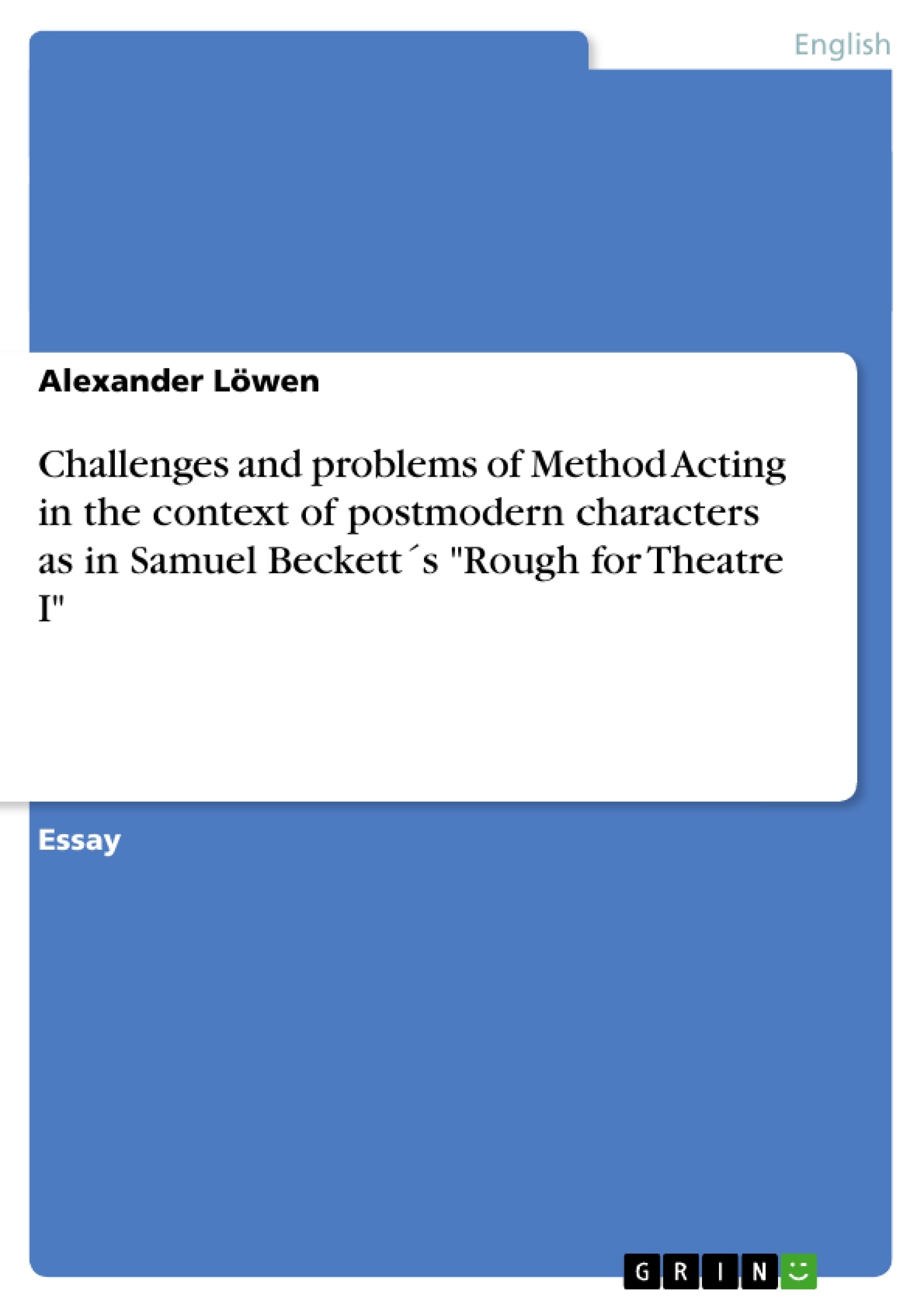Samuel Beckett´s plays are quite special. They deal with a great variety of special characters as well. My essay answers the question of how Method Actors may approach those peculiar characters, as in Beckett´s "Rough for Theatre I".
Inhaltsverzeichnis (Table of Contents)
- Introduction
- Method Acting - History and Principle
- The System
- Method Acting
- The Method's Principles
- Method Acting in "Rough for Theatre I"
- Conclusion
Zielsetzung und Themenschwerpunkte (Objectives and Key Themes)
This essay examines the challenges and problems of Method Acting when applied to the portrayal of postmodern characters, specifically those found in Samuel Beckett's "Rough for Theatre I." The author analyzes the history and principles of Method Acting as established by Konstantin Stanislavsky and Lee Strasberg, considering its effectiveness in conveying the complex emotions and communication patterns present in Beckett's characters. The essay aims to explore the difficulties actors face in understanding and identifying with these characters, ultimately questioning whether Method Acting is an appropriate approach for such challenging roles.
- The difficulties of Method Acting with postmodern characters
- The history and principles of Method Acting as developed by Stanislavsky and Strasberg
- The unique characteristics of Samuel Beckett's characters
- The challenges of conveying complex emotions and communication patterns in Beckett's plays
- The effectiveness of Method Acting in portraying characters in "Rough for Theatre I"
Zusammenfassung der Kapitel (Chapter Summaries)
The introduction sets the stage by discussing the distinctive nature of Beckett's characters and the difficulties they pose for actors. It emphasizes the unique communication and emotional complexities found in Beckett's plays, highlighting the need for a thorough examination of acting techniques suited to these roles.
Chapter two explores the history and principles of Method Acting, beginning with the work of Konstantin Stanislavsky and his "System." It then discusses the development of the Method by Lee Strasberg and highlights its key components, including Affective Memory, Sense Memory, and Emotional Memory. The chapter also briefly touches upon the technique of substitution, which is derived from Stanislavsky's "Creative If."
Schlüsselwörter (Keywords)
Method Acting, Stanislavsky, Strasberg, Beckett, postmodern characters, "Rough for Theatre I," emotional memory, affective memory, sense memory, substitution, acting theory, acting techniques, communication, complex emotions, challenges of acting.
- Citation du texte
- Alexander Löwen (Auteur), 2012, Challenges and problems of Method Acting in the context of postmodern characters as in Samuel Beckett´s "Rough for Theatre I", Munich, GRIN Verlag, https://www.grin.com/document/197691



